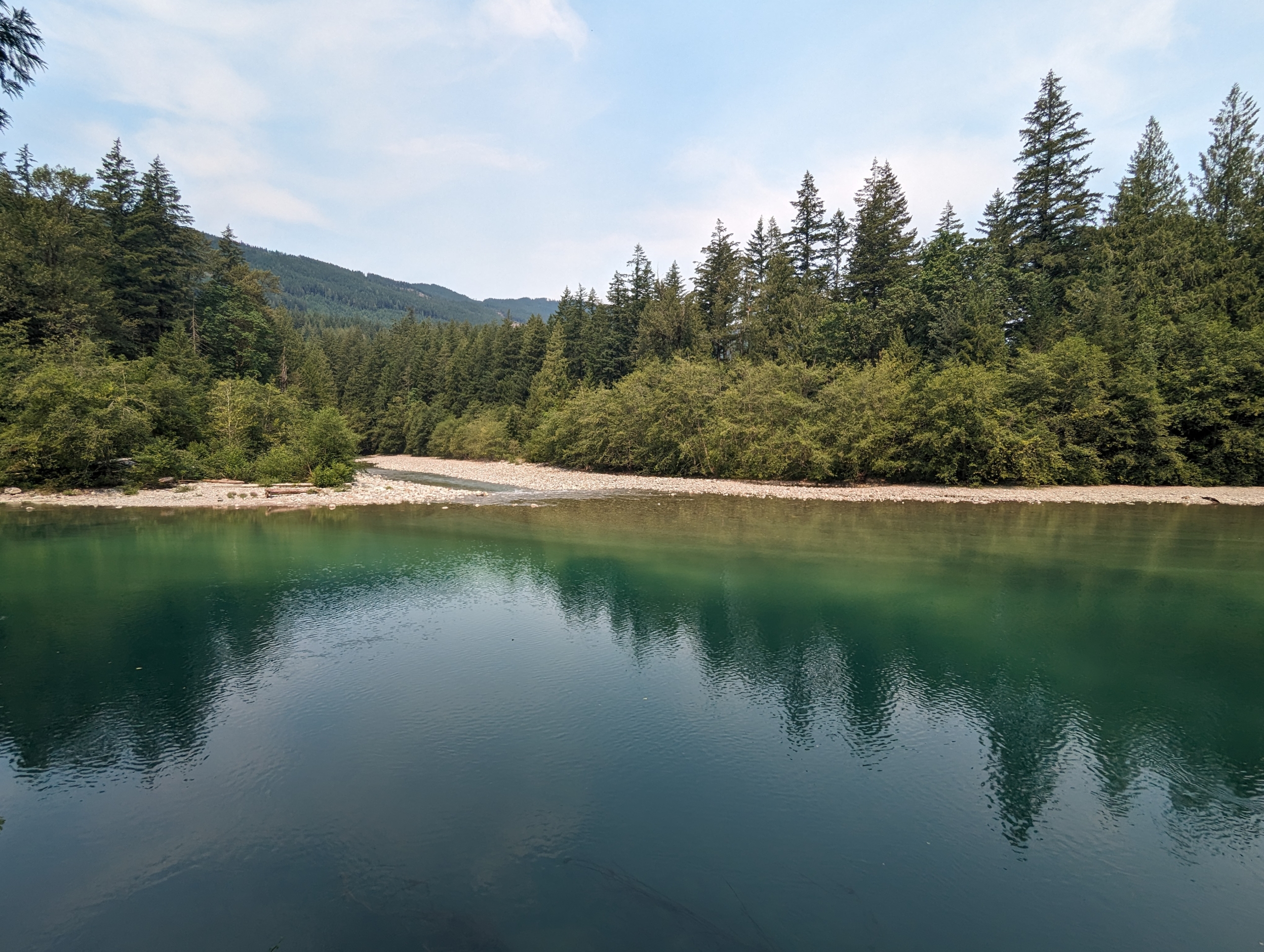River flows restored just in time for returning sockeye
Oct 30, 2024|inBlog, Climate Adaptation Series, Salmon Steward
This story originally appeared in the Winter 2024 edition of Salmon Steward, the Pacific Salmon Foundation’s quarterly print magazine.
“My grandfather would say to me, son, as soon as you see the water changing to a milky colour, you know the salmon are in there.”
Kelsey Charlie and his family have used this age-old indicator for generations as a sign that salmon are on their way home.
The elected official of Sts’ailes First Nation knows the glacial-fed waters of Harrison Lake and their salmon intimately. In his youth, he spent hours on his grandfather’s boat observing areas where salmon congregate in the Harrison River, just before they make their way toward their spawning grounds.
“If we caught a fish, I’d be able to tell just by its scales where it was going,” says Charlie, whose traditional name is Tixweltel. “I guess over time you just know by the look or by the feel, ‘this fish is going there’.”
The Harrison River is one of the Fraser River’s most important salmon-bearing tributaries and is home to all species of salmon. Harrison River sockeye continue their migration journey into Harrison Lake, spawning in rivers and streams further up the lake.
One of those rivers is Big Silver River, located about 40 kilometres north of Harrison Hot Springs. The river has two arms connected to the east side of the lake which join up about two kilometres upstream.
During the extreme flooding event in November 2021 that severely impacted the Fraser Valley, the right arm of Big Silver River was blocked by debris and disconnected from Harrison Lake when water levels dropped in the summer months.
The blocked arm became a major concern, particularly for a local sockeye population that has ‘poor’ status, as assessed by the Pacific Salmon Explorer.
“Engineers, biologists and technicians from Fisheries and Oceans Canada (DFO) conducted assessments of habitat quality indicators. We determined that gravel deposition at the upstream end of the right arm was an urgent threat to returning adult salmon,” says Justin Barbati, a DFO biologist.
In an attempt to mitigate impacts on the river’s salmon run, DFO crews undertook work to reopen the blocked river arm last year.
However, the operation was hampered by severe drought conditions. They could not fully restore fish passage, and the river still ran dry through the right arm in late summer 2023.
In 2024, PSF and DFO collectively provided $41,000 to see this critical habitat rehabilitation work through.
In late July, DFO crews used an excavator to forge a 12-metre-wide channel just upstream of the fork in the river, reaching past the obstruction in the right arm. The work successfully reconnected the right arm to the mainstem, just in time for the returning sockeye salmon run.
“500 cubic metres of gravel was removed from the right arm,” says Barbati. “This successfully increased flow into the spawning grounds and ameliorated fish passage concerns.”
The restored channel is expected to provide approximately 45,000 square metres of spawning habitat for sockeye, chum, pink, and coho salmon.
In addition, the area should see an estimated half a million sockeye and chum fry, 225,000 pink fry, 125,000 Chinook fry and 1,125 coho smolts using the restored habitat per year.
For Charlie, the project demonstrates both the resilience of salmon but also the importance of protecting them in the face of climate change.
“The salmon somehow find a way, even without our help. But we still have to do our part to help them – that’s always been our perspective.”
The Sts’ailes councillor knows the damage suffered at the mouth of Big Silver may cause lower salmon returns for the next few years, but he’s hopeful about the bigger picture.
“They [the salmon] keep striving,” says Charlie. “We know that some have made it to Big Silver this year, and if they made it, that means they are going to come back.”


The Big Silver project was the first of 14 projects funded by PSF’s Climate Emergency Fund in summer 2024. The fund was set up so PSF can respond rapidly to climate emergencies impacting salmon throughout the province. As of late September, PSF had approved $340,000 in 2024 towards projects affected by climate change issues like drought and wildfire. These projects were identified by a broader ‘Supporting Emergency Actions for Salmon’ working group with the First Nations Fisheries Council of B.C., DFO, the Province of B.C., and PSF.

 Remembering John Horgan
Remembering John Horgan